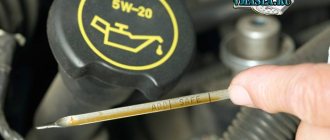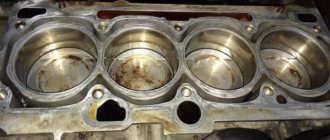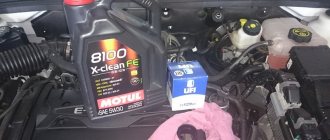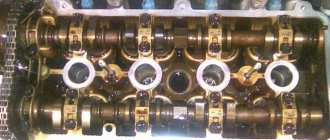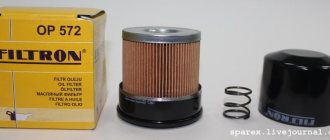The main tasks of motor oils are lubrication and engine cooling. Each car is individual in its technical characteristics. Properly selected lubricant contributes to maximum efficient operation of the unit, preventing the formation of deposits and neutralizing oxidation products.
Often on automotive forums there is a question about how to determine what kind of oil is poured into the engine. To find out, you need to understand its main properties.
Synthetics
The highest level in the production of lubricants. They are more resistant to high temperatures than mineral ones. The thermal stability of synthetics prevents its destruction in high temperatures. Synthetic lubricating fluid is produced by the method of organic synthesis of hydrocarbon raw materials with deeper processing of the source material, which makes its production much more expensive and difficult. Synthetics have an advantage when running the engine in cold conditions. Due to better fluidity during engine start-up and warm-up, these oils increase engine efficiency and help increase its service life.
How measurements are taken - step-by-step algorithm
So, let's look from a practical point of view exactly how to check the oil level step by step:
- If the car has just been driven, then it is necessary to turn off the engine and let it cool for 10–15 minutes, since the check is done on a cold engine, or at least cooled down.
- After the oil has flowed into the crankcase, you can open the hood. An oil dipstick is located near the cylinder head, with which measurements are taken.
- It must be removed and wiped dry with any piece of clean rag prepared in advance for these purposes. This is done in order to remove traces of old oil, which will not make it possible to objectively assess the amount of lubricant in the engine system.
- After this, the probe is installed all the way in its previous position and after a couple of seconds it can be removed out. During this time, the oil should leave a trace.
- It remains to assess the level of lubrication in the system, or rather, its volume. Each dipstick has two marks, which are marked “min” and “max” respectively. It is correct when the trace is located between these 2 marks. If it is above the max level, then there is an excess of lubricant in the system, if below the min level, then there is not enough lubricant and you will need to top up.
Someone may be wondering, is it possible to check the oil level on a hot engine? In some cars, manufacturers have taken care of this possibility. For these purposes, o and “hot” are provided, which indicate that in cold and hot modes the control measurement will show different results.
Mineral oil
It is produced directly from oil, by distillation and subsequent acid treatment or hydrotreating of oil fractions. Such products have good lubricating properties and high solubility of additives, which ensures hydrodynamic friction in almost any temperature regime.
However, it is impossible to develop a product based on mineral oil that will be equally effective at both low and high temperatures. Therefore, this type of lubricant must be selected according to viscosity.
On the overpass
In order to better examine the lower part of the engine, the car can be driven onto an overpass. In this case, you can easily see other faults: damage to the bottom, leaks of brake fluid. Sometimes on a used car you can see an incomprehensible hose hanging down.
This indicates that the ventilation system cannot cope with the removal of exhaust gases that break into the crankcase cavity.
You can identify such a malfunction without a trestle by inspecting the oil dipstick: its tube will be very oily.
Semi-synthetics
The basis of this product is obtained by adding additives to mineral base compounds. The characteristics of mineral petroleum products can be improved by supplementing its composition with synthetic components. Thanks to the synthetic base, it is possible to produce lubricants that have excellent lubricating properties. It is almost impossible to produce these oils only on the basis of a mineral base. Synthetics bring with them a number of very useful and important properties, without dramatically increasing the price of the final product.
Typically, semi-synthetics are used in modern power units with high mileage, when waste losses increase.
What should you pay attention to before purchasing?
Before purchasing you need to pay attention to:
Price
A relatively low price immediately reveals that the oil is fake. There may be a discount, but it is only provided to large lubricant dealers. And it, in turn, does not go beyond a few percent. In ordinary stores they will not sell you high-quality oil with a 20-30% discount. They will assure you that this is a promotion or a sale of leftovers, but this is most likely a fiction.
You can also buy fakes in large retail stores. In this case, the culprit is the store owners, who stock the shelves with low-quality goods.
However, there is a risk of purchasing a fake at the price of a quality product. So you need to pay attention to other distinctive features.
Place of purchase
Most often, counterfeits are sold in dubious retail outlets, for example: markets or little-known online stores. In well-known stores with a good reputation, the risk is less, but it still exists.
Package
Well-known brands are trying to fight counterfeits with the help of packaging. These are lids with double seals, double-layer labels, holograms and the like. The shape and color of the canisters are constantly changing.
Canister
Containers for liquids are made of high-quality plastic. Its shade should shimmer in the light. Feel the canister, it should be smooth and its seams even. There should also be no visible casting defects.
Counterfeit canisters are translucent, smell bad, have uneven seams and burrs.
Label
When examining the label, it should not arouse suspicion. High-quality printing speaks of the originality of the product. The sticker itself should stick smoothly and without air bubbles. Try prying it with your fingernail. On fakes it quickly lags behind the surface. The fake also has poor printing, blurry tones, and in special cases, spelling errors.
Determining the type of lubricant poured into the engine
Each driver himself decides on the choice of lubricants for his vehicle. Therefore, when buying a used car, you definitely need to find out what oil it was used on and when the last service was performed. If for some reason the seller does not give a definite answer, you can try to determine the type of oil in the engine yourself.
How to find out what kind of oil is poured into the engine, check options.
View the service book. Information about the required model of petroleum product is indicated in the manufacturer's recommendations for the vehicle. Although it usually indicates the frequency of maintenance without specifications. In this case, you must contact the service center that performed the maintenance of this vehicle;
View specialized resources. Many car owners register accounts where they keep records of vehicle maintenance;
Conduct laboratory analysis. Motor fluid is an important carrier of information about the general technical condition of the engine. A laboratory test will help determine the engine oil specification.
Also, based on the analyzes performed, it is possible to determine in advance the causes of malfunctions and determine the area of wear, which will significantly reduce repair costs;
Identify by distinctive features. The shade of the oil varies depending on the additives and dyes used in its structure; some drivers try to determine the type of motor fluid from it. But this method is ineffective, since during operation any lubricant changes color, which makes it difficult to identify the brand.
It is worth remembering that when performing maintenance, part of the waste fluid remains on the walls and crankcase, which also affects the color and smell of the future product.
Of course, none of the options can provide a 100% guarantee of the type of fuel and lubricants poured into the engine. If there is a danger that the new lubricant will be incompatible with the oil that is poured into the internal combustion engine, it is recommended to flush it.
To rinse or not to rinse
Flushing is only relevant when low-quality oil is used. It is also used when buying a used car. It is unknown what kind of oil was poured into it, so it is better to flush the engine during the first replacement. If a car owner pours into the engine the cheapest oils that he could find on the market, then it is better to play it safe here too. By promptly flushing a running engine, you can minimize the likelihood of hydraulic compensators jamming, piston rings sticking, and oil passages becoming coked. In addition, this procedure will ensure equalization of compression in different cylinders.
Flushing the engine when changing the oil
Thermal and mechanical loads of the engine gradually render any technical fluid unusable. At the same time, the lubricating properties deteriorate, and contaminants accumulate that must be removed.
Flushing options.
- Washing with varietal composition. The method consists of flushing the engine with fuels and lubricants that are planned to be used in the future. In this case, you need to fill in fresh oil to the minimum level and drive the car for a short time (100 - 500 km). Then change the oil again along with the filter.
- Flushing oil. With this option, the waste liquid is replaced with a special flushing liquid. Allow the engine to idle. Then the flushing fluid is replaced with the necessary lubricant, followed by installation of a new filter.
- Flushing additives. Such liquid is poured into the lubricant 50–100 km before it is replaced. This option is recommended for fairly dirty engines. Having served their purpose, the additives evaporate from the system as much as possible. After the recommended mileage, you can drain the old lubricating fluid along with dirt and deposits, which have completely dissolved under the action of the active flushing components. Only after this should new fuel and lubricants be poured.
- Five minutes. This cleaning liquid is added to the engine oil immediately before changing it. Next, you need to start the engine for 5 minutes while holding idle. After this, standard maintenance work.
Is it normal or does it need replacing?
When starting a fluid test at home, follow these steps:
- warm up the engine;
- stop the power unit, allow the mixture to drain from the engine to the sump;
- take out the dipstick, drop some engine fluid onto a white napkin or sheet of paper;
- leave the napkin in a horizontal position for 2 hours (more is possible);
- determine the condition of the liquid by the oily stain left behind.
Figure 1. Oil slick
Having tested to check the quality of motor oil at home, we received the result shown in Figure 1.
Let's analyze the state of the tested mixture. To do this, we will select zones:
- 1 - core, let’s denote its diameter d1, mm;
- 2 - marginal zone of the core - d2, mm;
- 3 - dispersed zone, designated D, mm;
- 4 - zone of pure oil, not needed for calculations, may be absent during testing.
Let's calculate the diffusion area, which characterizes the dispersing abilities of motor fluid using the formula: Dc = 1- (d2)2/ D2. The resulting number must exceed 0.3 conventional units, otherwise the dispersing properties of the liquid are poor - the mixture must be replaced.
